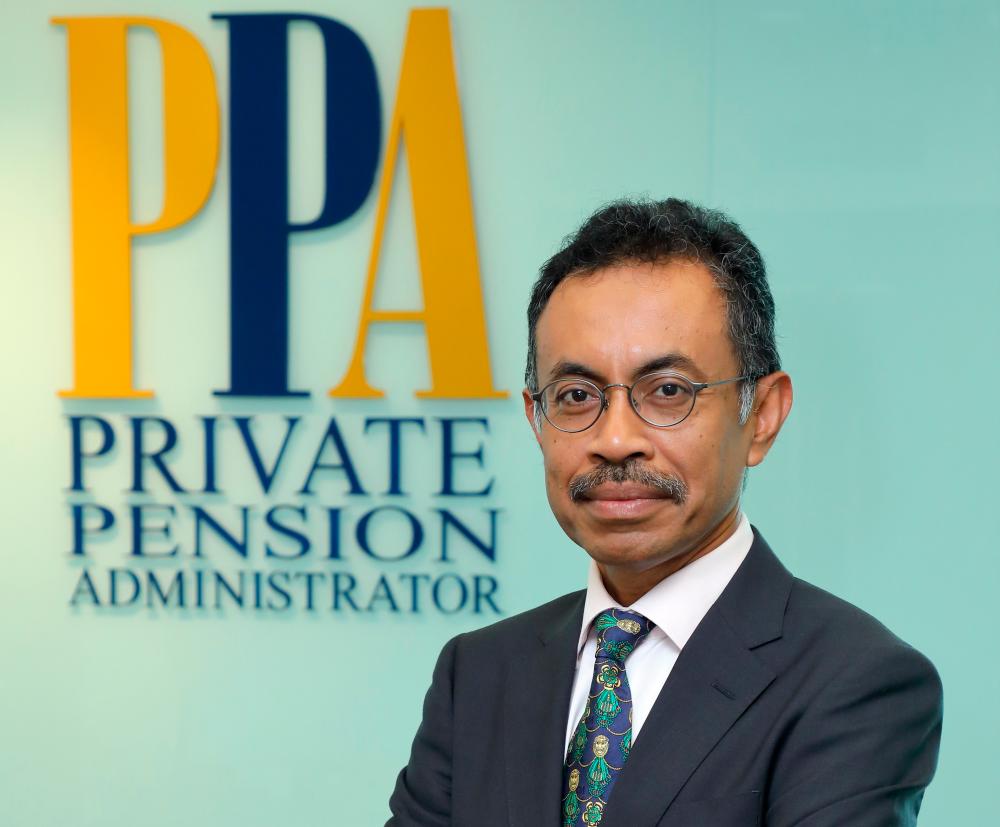PETALING JAYA: The Private Pension Administrator Malaysia (PPA) is encouraging Employees Provident Fund (EPF) members to consider signing up for its private retirement schemes (PRS) to complement their retirement savings.
PPA CEO Husaini Hussin said PRS were established as complementary or voluntary schemes for long-term savings as based on its studies, “savings in EPF alone were not enough”.
“PRS are designed for retirement. They have a built-in feature to stop you from accessing funds. In your financial planning, you have a few jars, if you’re already an EPF member then you have an additional one such as PRS, these two are for retirement ... you need to have different investment jars to save for retirement – make it purely for retirement,” he said.
Launched in 2012, PPA is a body approved by the Securities Commission Malaysia and is the central administrator for PRS. Its role is to protect private retirement schemes, PRS members’ interests and educate the public on PRS.
Currently, it has nine PRS providers and about 70 funds – syariah and conventional.
Each provider offers a choice of retirement funds from which individuals may choose to invest in based on their retirement needs, goals and risk appetite. In addition, the fund options under the scheme are intended to enhance long-term returns for members within a regulated framework.
On the difference between PRS and EPF, Husaini said the former is a voluntary scheme while the latter is mandatory for those who are employed in the private sector.
He pointed out that they have different features in terms of investment mechanisms. He said EPF has its own team and investment board or decision makers on how to utilise and invest its members’ funds.
“PRS funds received must be invested in the Malaysian capital market. The funds can be from overseas, but all must be invested in the capital market and not, for example, in infrastructure projects, like EPF investments – that’s also a feature difference,” he told SunBiz.
Husaini said there are multiple funds that PRS members can choose from, compared with EPF, which manages conventional and syariah portfolios.
“In PRS, there are growth, moderate, conservative type of funds. Like conservative (funds), higher bond, higher fixed income – let’s say 80%/20%, so 80% fixed income or bond, 20% equity. Growth is the opposite, 20% fixed income 80% equity, so there’s more volatility, but most people are attracted to growth funds because, during the good times, growth (funds) can bring a lot of returns,” he explained.
Husaini said PRS allows for fund transfers, which is called transfer option or switching. For example, if the same provider has multiple funds, a member has the option to switch from one fund to another fund, within the same provider. Transfer refers to changing to a different provider.
He added that a member can have one PPA account, but is able to invest in multiple funds and providers.
Currently, PRS offers tax relief for individuals, whereby contributors are allowed to claim personal tax relief of up to RM3,000 and the incentive is available until assessment year 2025.
Husaini says one needs to have different investment jars to save for retirement.









